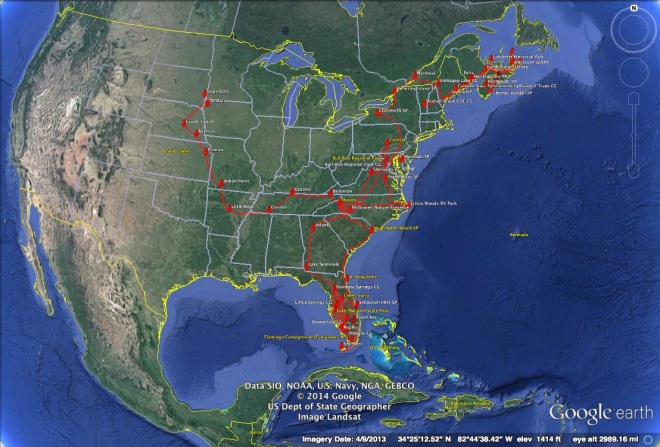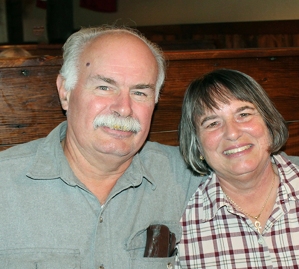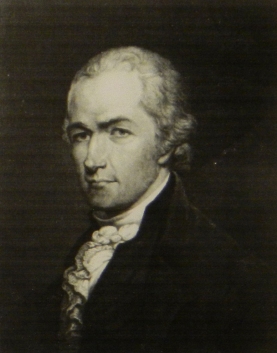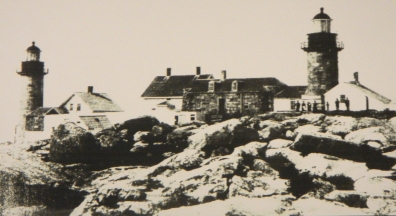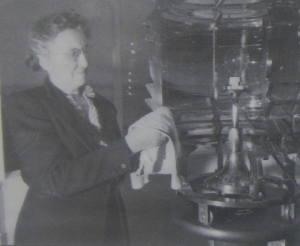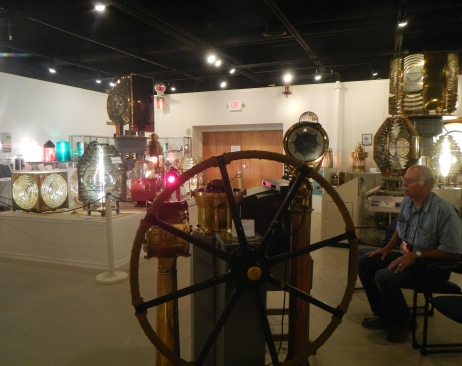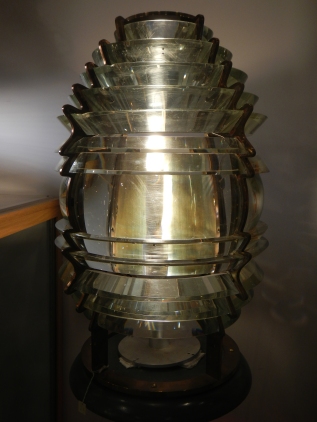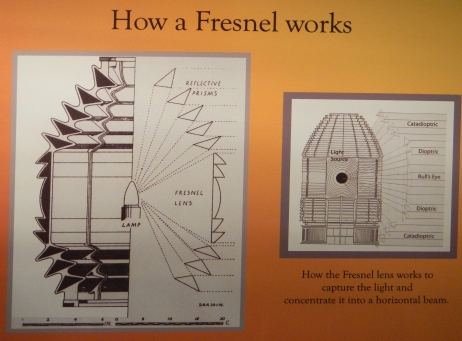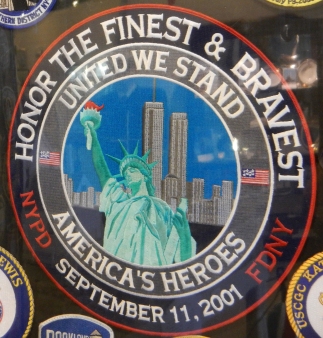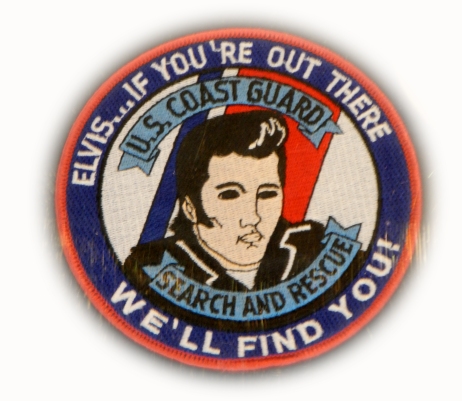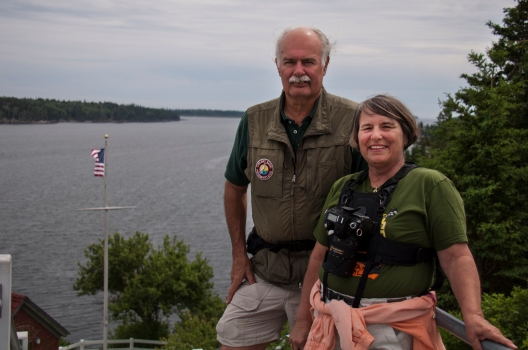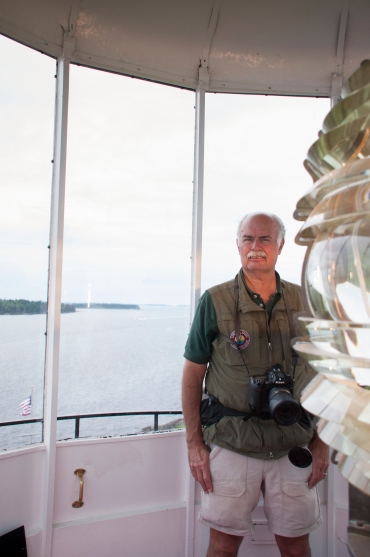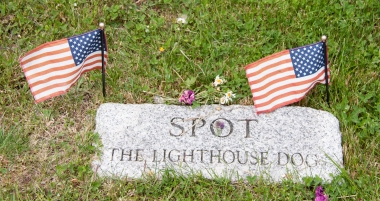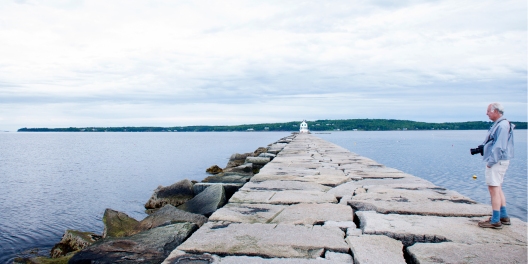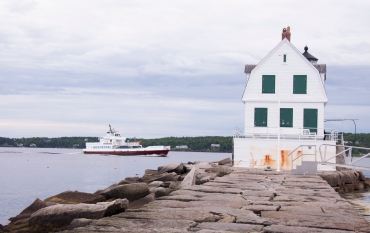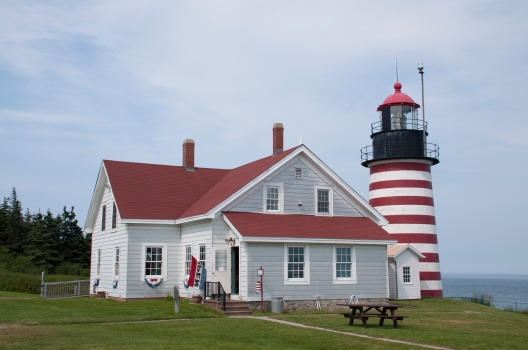
Most of us have heard of Campobello Island. Other than the fact that it has something to do with FDR, I don’t think many of us know much about it. How many of us realize that it isn’t even in the United States? Actually, it’s just across the border, in New Brunswick, Canada, separated from the US mainland at Lubec, Maine by less than a quarter mile via the Franklin Delano Roosevelt Bridge. The only way off the island onto the Canadian mainland, is by ferry.

Lubec, Maine
It isn’t a large island, maybe five kilometers or so across by sixteen long (remember, we’re in Canada now, so we measure things by kilometers… klicks… a bit less than 2/3 of a mile). There are a few residential communities there, but not much in the way of services. A small IGA type grocery store, a post office, a small local library, and that’s about it. Not even a gas station. We hadn’t thought about our cell phone service until we approached the border. We had to make a quick change to our plan so we could make and receive calls in Canada. After all of that when we got to the campground we found out we had no service anyway! We found out our internet hotspot would be ridiculously expensive so we put that on hold. As we are dependent on free wifi now our posts especially those with video may be delayed or out of order as some free spots are too slow to upload these files.

Opal And Steve On Campobello

Iris Blooming At Cranberry Point

Evidence Of Island’s Rise From The Ocean Floor
What it does have, is beautiful coastlines, a couple of very picturesque lighthouses, Herring Cove, a New Brunswick Provincial Park with RV camping facilities and the only International Park in the world completely within the boundaries of one country. The Campobello International Park is run jointly by the United States and Canada, but located totally within Canada. At Herring Cove we had a very comfortable pull-through campsite, surrounded by red spruce and birch trees, with electric connection, but no water or sewer at the site. There was a water spigot about a hundred feet (thirty meters?) from our site, so we had no problem filling up our fresh water tank.
Being surrounded by trees, we didn’t even try our Direct TV antenna, which we were told might work in Canada as long as we are fairly close to the border. But the farther north we go, the lower in the sky the satellite is, so for our duration in Canada, we probably won’t be seeing much television. We do have several things recorded, and we still get Netflix movies, so we’ll still have something to watch on those evenings when we don’t feel like sitting outside at the fire or going in to play dominos or cribbage. One nice thing about the red spruce woods around us is the firewood supply. I had no trouble finding small dead trees or branches, which I dragged back to the site and cut into small pieces for the campfire. The spruce caught quickly and burned nicely… perfect wood for a fire.

Logo Of Campobello International Park
Back in the late 1890s, when Franklin Roosevelt was a year old, his parents vacationed on Campobello. There were a few resort hotels there, trying to attract the well-to-do from both the US and Canada. The Roosevelts fell in love with the island’s beauty and serenity. They bought land and built a summer “cottage” on the island. As young Franklin grew up, he also loved Campobello, hiking and swimming, canoeing and learning to sail. He brought his bride, Eleanor and she also was smitten.
The original house, the one bought by Franklin’s parents, no longer exists. A neighbor’s will allowed Franklin’s parents to buy her home and gift it to Eleanor and Franklin. They expanded the house to become what is now known as the “Roosevelt Cottage”. Eleanor’s and Franklin’s children also spent their summers here. And it was here that Franklin, now a young man and up-and-coming politician, contracted polio. Most of the pictures you see of FDR are in his post polio years so I was fascinated to see pictures of him as a young athletic man golfing, sailing and playing with the children.
Their property and 34 room summer “cottage” are now part of the International Park and open to tours most days. Across the road from the cottage is a large natural area of carriage roads for drives or biking, hiking trails and beaches for clamming or walking. Also available, at neighboring “Hubbard House” is “Tea with Eleanor”, a free event, held twice daily. Tea and cookies are provided while two park docents discuss Eleanor and her fascinating life. Eleanor Roosevelt has always been a special hero to Chari, so I’ll let her take over for a while here.

Having Tea “With Eleanor” At Campobello

View From The Hubbard House Where The Tea Was Held
FDR is remembered here for his long residency and political accomplishments. After contracting polio he returned to Campobello only 3 times. Eleanor returned every summer. She bonded with the local residents and is remembered for her warmth and sincere interest in the well being of local families. I’ve always thought that if I could invite people from history to a dinner party, Eleanor Roosevelt would be one of the guests. The two Interpreters (their name for Rangers), Carolyn and Violet, who spoke at the tea offered different views of Eleanor. One talk focused upon her achievements as First Lady, UN Ambassador and writer of her My Day column. The other related stories of a personal nature, many were stories that had been shared by visitors to the park. One of the most touching was a woman who as a child was being abused by her stepfather. She had written to Eleanor when she was First Lady. The envelope was just addressed Mrs. Roosevelt, The White House, Washington, DC. It was delivered. Three weeks later social service workers were at the home and took the children into protective custody. When that woman visited Campobello she had said if Mrs. Roosevelt hadn’t intervened she doesn’t know what would have become of her. FDR credited her for making him aware of the plight of the average man. I’m sure this led to his aggressive programs during the Depression of the 1930s.

Famous Depression Era Photo

FDR Sign Social Security

FDR With Churchill And Stalin

FDR Funeral Procession
Another interesting story is that when the bridge from Lubec, Maine to Campobello Island was just about finished, but not yet opened, around 1960, Eleanor arrived just after the ferry to Campobello had closed down for the evening. Bridge workers escorted her car across, and she became the first person, other than construction workers, to cross the bridge named for her husband.

West Quoddy Lighthouse
We took a short drive back into Maine one afternoon to see the West Quoddy Lighthouse, the easternmost point in the United States. West Quoddy, the easternmost point? Is there an East Quoddy? Well, yes there is, but that’s in Canada. And there’s a lighthouse there as well. At the West Quoddy lighthouse, there is a wall display mentioning the northernmost, southernmost, westernmost, and centralmost (is that really a word?) points in the US. Any clue where these places might be? The answers will be at the end of this post.

Sunsweep Scullpture
Back on Campobello, we took a few scenic drives and spent a lot of time just relaxing. On one drive, we went out to Cranberry Point and while out there, decided to take a bit of a hike to see a portion of a special sculpture. Sunsweep is an international art project, spanning the US/Canadian border. One portion of the sculpture is at the Roosevelt Campobello International Park, the center of the sculpture is at American Point Island, Lake of the Woods, Minnesota, and the far end is at Boundary Bluff, Point Roberts, Washington. From the brochure describing the sculpture: The human scaled units at each site are aligned to specific solar and stellar conditions. Facets of the sculpture correspond to solstices and equinoxes, and portray the path of the sun from east to west, from dawn to dusk. They were all carved from one slab of Canadian black granite, and are laser etched with a contour line of a woman’s hand that topographically evolves into a circle (sun symbol).
I guess visits to Minnesota and Washington will be in the cards. I only hope they don’t include what happened here at the eastern point of Sunsweep. After hiking about a mile to get there, Chari stepped into a hole in the ground hidden by the grass and badly twisted her ankle. It didn’t help the ankle any, but she was able to walk back to the truck before it stiffened up. As I write this, a couple of weeks later, it’s almost back to normal, but it still swells up a bit at night.
We had made friends with another camper, a lady named Joyce, a few sites away from us. She joined us for dinner and a campfire that evening, and while we were sipping on a glass of wine before dinner, we met another family, Nancy, Roger, and their daughter, Emma, who were just pulling in. Before setting up camp in their Class A motor home, they were filling up their fresh water tank from the spigot alongside us. We talked for a bit, and asked them to join us at the fire after dinner. Later, around the fire, Roger and Emma joined us, and Joyce was talking about how much she enjoys clamming on the beach. The next morning, Joyce took them all out to teach them. We would have gone, but with Chari’s foot, we decided to sit it out. Much to our surprise (and delight), when they returned, Joyce came over with a bucket of about three dozen soft shells for us. The following night we were invited to dinner by the Virginia family. We hope to keep in touch with all of them.
What a treat that was! Before dinner that evening, we steamed them and had a delicious appetizer of steamers dipped in garlic butter with a glass of beer. Ahhh… Life is Good!

East Quoddy Lighthouse

Friar’s Head Harbor At Sunset On Campobello Island
Answers to Trivia Questions
Well, the answers depend on if you are speaking of all fifty states, or just the “lower forty-eight”. Speaking of all fifty, the northernmost point is Point Barrow, Alaska. Westernmost is Cape Wrangell, Alaska. And southernmost would be Ka Lae, Hawaii. The geographical center of all fifty states is a point seventeen miles west of Castle Rock, near Belle Fourche, South Dakota. If, you are interested in the “lower forty-eight”, Cape Alava, Washington is the farthest west, Key West, Florida the farthest south, and Northwest Angle, Minnesota the farthest north. A point two miles northwest of Lebanon, Kansas is the geographic center, but forty-two miles south of Lebanon is the geodetic (following the curve of the earth) center. Confused? So is the U.S. Geodetic Survey, which no longer calculates “centers” due to the imprecise nature of such measurements. According to the sign at West Quoddy, Oscar S. Adams, Senior U.S. Mathematician, said that since there is no definite way to locate such a point, it’s best to ignore it entirely.







































